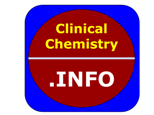Clin Chem Lab Med. 2025 Oct 20. doi: 10.1515/cclm-2025-0522. Online ahead of print.
ABSTRACT
OBJECTIVES: Precise and accurate determination of urinary cortisol is important for diagnosis and monitoring of cortisol excess and deficiency. To achieve this, a selective and specific, isotope-dilution two-dimensional heart-cut liquid chromatography-tandem mass spectrometry (LC-MS/MS)-based method was developed.
METHODS: A novel, two-dimensional heart-cut LC-MS/MS method was developed using a Waters Acquity BEH C18 column and a Raptor Biphenyl column, with water (A1) and with 0.2 mM ammonium fluoride in water (A2) and methanol (B1+B2) as mobile phases. This approach was complemented by a supported liquid extraction (SLE) sample preparation protocol. Matrix effects were assessed through post-column infusion experiments and comparisons of standard line slopes across matrices. A multi-day validation study evaluated accuracy and precision of the candidate reference measurement procedure (RMP) and measurement uncertainty (MU) was estimated in compliance with current guidelines. Reproducibility was assessed by performing a method comparison study between two independent laboratories.
RESULTS: In the first LC column dimension, cortisol and prednisolone were separated from cortisone, prednisone, and 20-beta-dihydrocortisone. Baseline separation of cortisol from prednisolone was achieved in the second dimension. No interfering signals were detected at the retention time for quantifier and internal standard transitions in any urine samples analysed. No significant matrix effect, ion suppression, or enhancement was observed. Linearity was successfully demonstrated (r≥0.999); residuals were randomly distributed in a quadratic model via linear regression with an 1/x weighting. The lower limit of the measuring interval was determined at 2.00 ng/mL (5.52 nmol/L), displaying a relative deviation of -0.1 %, a coefficient of variation (CV) of 2.9 %, and recoveries of 96-103 %. Intermediate precision ranged from 1.9-3.2 % and repeatability CV from 1.6-2.7 %. Relative mean bias ranged from -3.5-1.2 %, indicating method accuracy was unaffected by matrix variance. Measurement uncertainties (k=1) for cortisol were ≤3.4 % across different concentrations and sample types. The expanded uncertainty at a 95 % confidence level (k=2) was ≤6.8 %. An increased number of measurements (n=6) for target value assignment reduced the uncertainty to 0.8-1.3 % (k=1), yielding an expanded uncertainty (k=2) of 1.7-2.5 %.
CONCLUSIONS: The validation results confirm the robustness, accuracy, and reliability of this RMP for determination of cortisol in human urine within a working range of 2.00-220 ng/mL (5.52-552 nmol/L).
PMID:41109963 | DOI:10.1515/cclm-2025-0522
